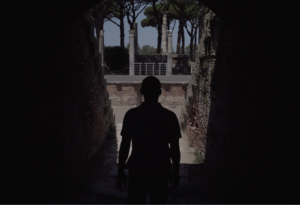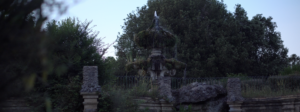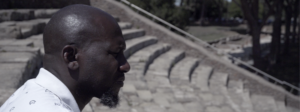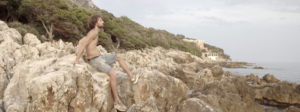30 Mar An interview with Ted Efremoff, director of “A Refugee’s Guide to Rome”
BIO
Ted Efremoff’s work explores the environmental, personal, and cultural constraints ingrained within prevailing power structures. The purpose of his work is to generate positive social and environmental change.
The films and videos Ted Efremoff has directed and produced have been screened at Free Speech TV in the US, Center for Social Innovation in Vienna, Austria, The Institute for Pan-African Thought and Conversation in Johannesburg, South Africa, The Fulbright Foundation in Sofia, Bulgaria and Associazione Culturale Spiazzi, in Venice, Italy. His latest film, A Refugee’s Guide to Rome has won multiple Best Documentary Feature and other awards at international film festivals.

A Refugee’s Guide to Rome is a particularly moving story that is both personal and universal. How did you come into contact with the protagonist of this film?
I went to Rome on a grant in the summer of 2018. I remember writing an email to the then Program and Development Director of the Joel Nafuma Refuge Center Annika Milisic-Stanley seeking a person who would be interested in telling their story. This was her response:
“I have a very articulate and interesting ex-journalist who is a political refugee here from Sierra Leone. He was forced to leave as he got into trouble after defending the human rights of the LGBT community in Freetown. He is interested and willing to take part in your film… He is very articulate, honest, and open, and I admire him immensely.”

You, Ted, come from the United States. How did you become familiar with the migration situation in Italy, Europe in general, and the routes of clandestine travel from Africa?
As a 16-year-old immigrant from the Soviet Union, I spent a month wandering the streets of Rome while my family awaited documents for passage to the United States. I was mesmerized by the architecture, sculpture, and history that I witnessed.
My fascination with the city eventually led to the dream of creating a film about the people who seek refuge here. I wasn’t specifically set out to make a film about African migrants, but when I met Joseph, his story served as my initial education. Subsequent research really exposed the dangers this migration entails.

In addition to the powerful narrative guidance of protagonist Joseph Peters, the film features truly raw footage of the desert and sea journey of so many immigrants from Africa. How did you make it, or how did you come to select this material?
I spent months viewing archival footage of the war in Sierra Leone and migration from Africa from a variety of news sources. Some of the footage was heartbreaking and really hard to watch. I tried to choose segments of footage that fit with Joseph’s narration and retained an element of humanity and dignity in portraying those who are seeking refuge in Europe.

What motivated you to devote yourself to a film on this theme? Do you think such a documentary can make a difference politically?
My initial motivation was my own infatuation with Rome and the many travelers who have settled in the city. Once I met Joseph I knew I have found the center of the story I wanted to tell.
I don’t know whether this particular story will make a difference politically. I do know that whenever there is war, oppression, or natural disasters such as earthquakes and famines, people will move to seek a better place to live. I am one of those people. The people in the areas they try to move to usually react in two major ways. One is to protect your turf and try to repulse the refugee. The other is to have compassion and seek to help. I feel that our very survival, socially, economically and environmentally can depend on whether we evolve past our fears of not having enough into a sense that taking less and giving more is good for all.

I am currently working on a film titled Sowing the Tempest. It explores how climate change affects food security and is being shot mostly in Alaska, Svalbard Archipelago and Norway.

